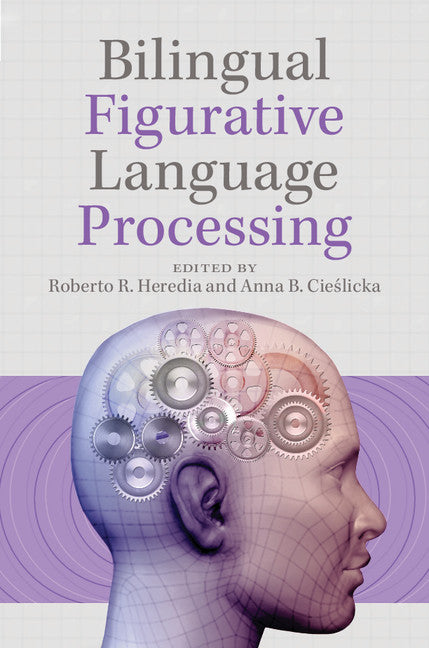Freshly Printed - allow 4 days lead
Couldn't load pickup availability
Bilingual Figurative Language Processing
Bilingual Figurative Language Processing is the first book of its kind to address how bilinguals learn, store, and comprehend figurative language.
Roberto R. Heredia (Edited by), Anna B. Cie?licka (Edited by)
9781107609501, Cambridge University Press
Paperback / softback, published 26 January 2015
435 pages, 52 b/w illus. 28 tables
22.9 x 15.2 x 2.2 cm, 0.63 kg
'A fresh perspective on the production and comprehension of figurative language and how people acquire, store, and process it in multilingual settings.' American Journal of Psychology
Bilingual Figurative Language Processing is a timely book that provides a much-needed bilingual perspective to the broad field of figurative language. This is the first book of its kind to address how bilinguals acquire, store, and process figurative language, such as idiomatic expressions (such as kick the bucket), metaphors (such as lawyers are sharks), and irony, and how these tropes might interact in real time across the bilingual's two languages. This volume offers the reader and the bilingual student an overview of the major strands of research, both theoretical and empirical, currently being undertaken in this field of inquiry. At the same time, Bilingual Figurative Language Processing provides readers and undergraduate and graduate students with the opportunity to acquire hands-on experience in the development of psycholinguistic experiments in bilingual figurative language. Each chapter includes a section on suggested student research projects. Selected chapters provide detailed procedures on how to design and develop psycholinguistic experiments.
Part I. Theoretical Implications: 1. Embodiment in metaphor and (not?) in bilingual language Albert Katz and Andrea Bowes
2. Is the idiom principle blocked in bilingual L2 production? Istvan Kecskes
3. Linking the figurative to the creative: bilinguals' comprehension of metaphors, jokes, and remote associates Jyotsna Vaid, Belem G. López and Francisco E. Martínez
Part II. Methodological Approaches: 4. Metaphoric reference: a real-time analysis Roberto R. Heredia and Mónica E. Muñoz
5. Nonliteral language processing and methodological considerations Omar García, Anna B. Cie?licka and Roberto R. Heredia
Part III. Figurative Language Processing: 6. Contrasting bilingual and monolingual idiom processing Debra Titone, Georgie Columbus, Veronica Whitford, Julie Mercier and Maya Libben
7. Idiom acquisition and processing by second/foreign language learners Anna B. Cie?licka
8. Neurophysiological markers of phrasal verb processing: evidence from L1 and L2 speakers Silke Paulmann, Zainab Ghareeb-Ali and Claudia Felser
9. Irony processing in L1 and L2: same or different? Katarzyna Bromberek-Dyzman
Part IV. Cross-Linguistic Approaches and Applied Issues: 10. Straight from the horse's mouth: idiomaticity revisited John I. Liontas
11. Anger metaphors across languages: a cognitive linguistic perspective Zoltán Kövecses, Veronika Szelid, Eszter Nucz, Olga Blanco-Carrion, Elif Arica Akkök and Réka Szabó
12. Gauging the semantic transparency of idioms: do natives and learners see eye to eye? Frank Boers and Stuart Webb.
Subject Areas: Educational psychology [JNC], Child & developmental psychology [JMC], Psychology [JM], Psycholinguistics [CFD], Linguistics [CF]


